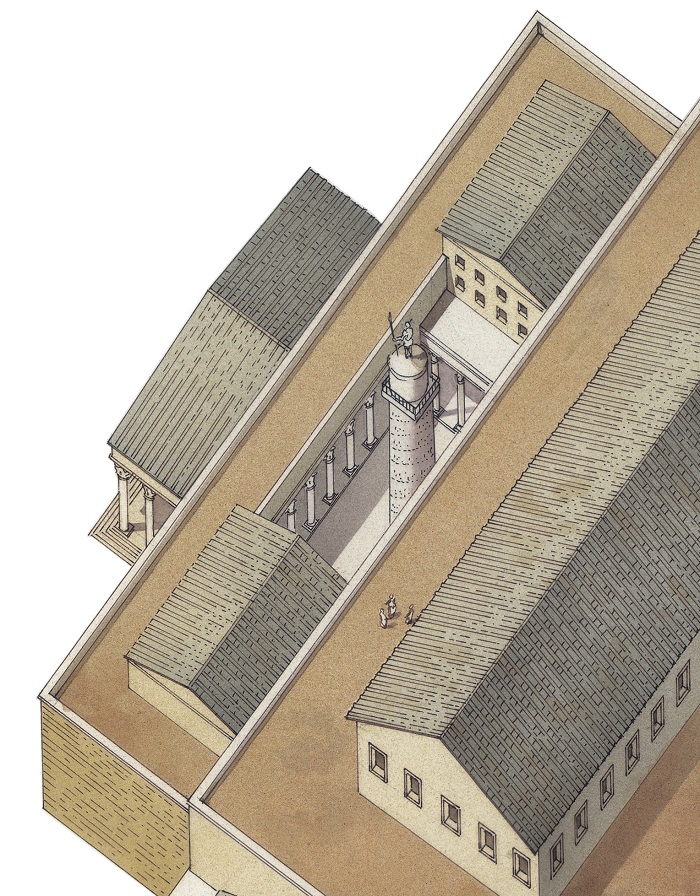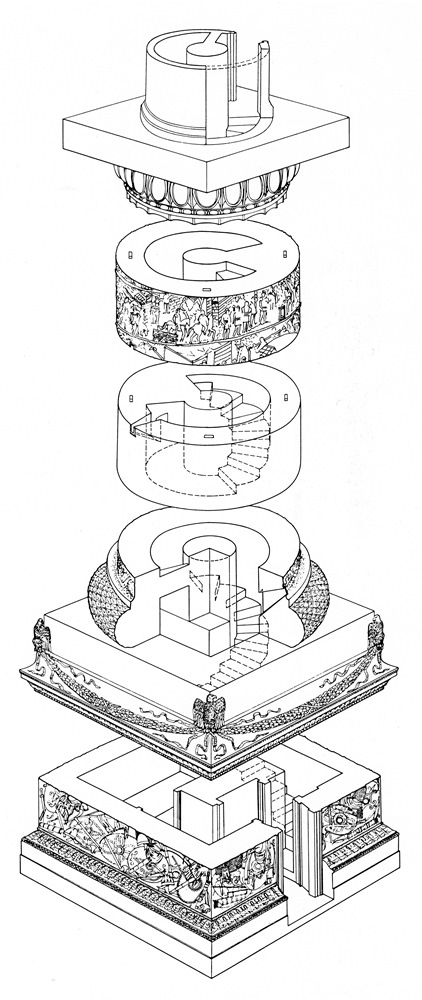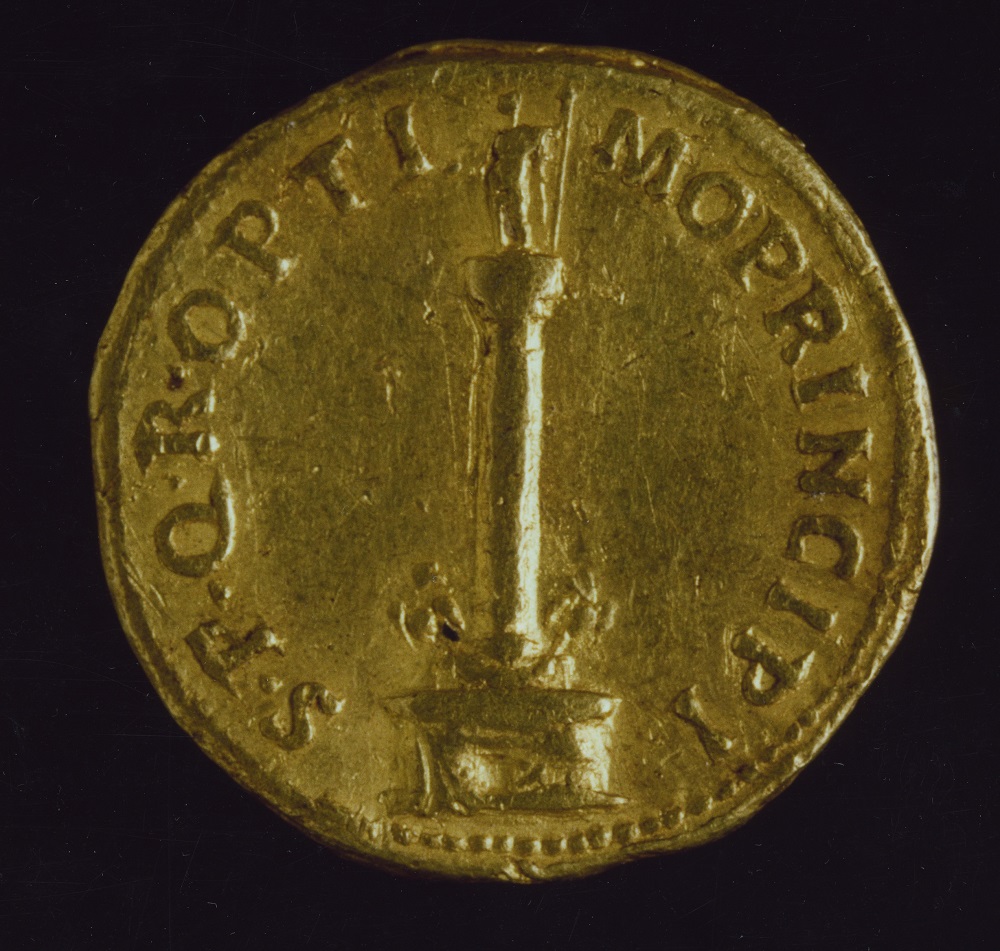The Trajan’s Column narrates in pictures the two military campaignes in the years 101-102 and 105-106 A.D. in which Emperor Trajan (98-117 A.D.) conquered Dacia, corresponding largely to the modern Romania. Thanks to the extraordinary spoils of war Trajan could build the most impressive among the Roman Fora, which bears his name and was inaugurated in 112 A.D.

The Column was erected at the centre of a courtyard bordered by the monumental entrance to the Forum to the north, the Basilica Ulpia to the south and by two libraries to the east and to the west.

It rests on a plinth decorated with bas-reliefs depicting stacks of weapons. The shaft, 100 Roman feet high (about 30 metres), consists of 17 colossal monolithic drums made of white Carrara marble, with a diametre of nearly 4 metres. Inside it develops a spiral staircase of 185 steps leading to the top. Around the shaft you have the frieze, imagined as a spiral wound roll, almost 200 metres long. It is densely animated by scenes, with almost 2.500 characters; Emperor Trajan appears 59 times.The Column not only celebrated the conquest of Dacia, but also had the function of Trajan’s mausoleum-monument: in fact in the plinth they placed the golden urn with the ashes of the Emperor (who died on August 8, 117).

On the top of the column there was a gilded bronze statue of the Emperor. This was probably lost in the Middle Ages and in 1587 it was replaced by the will of Pope Sixtus V (1585-1590) with a new statue of St. Peter, which still exists.
